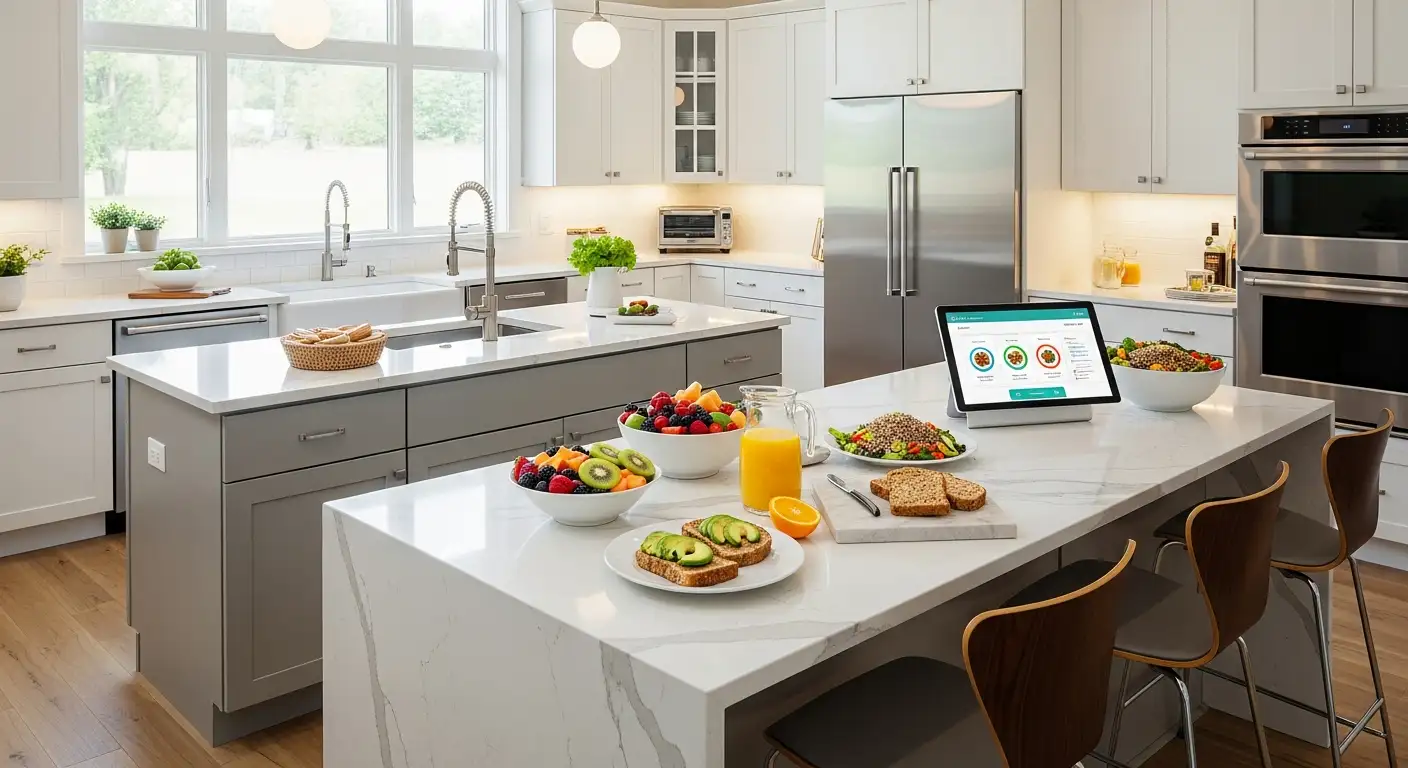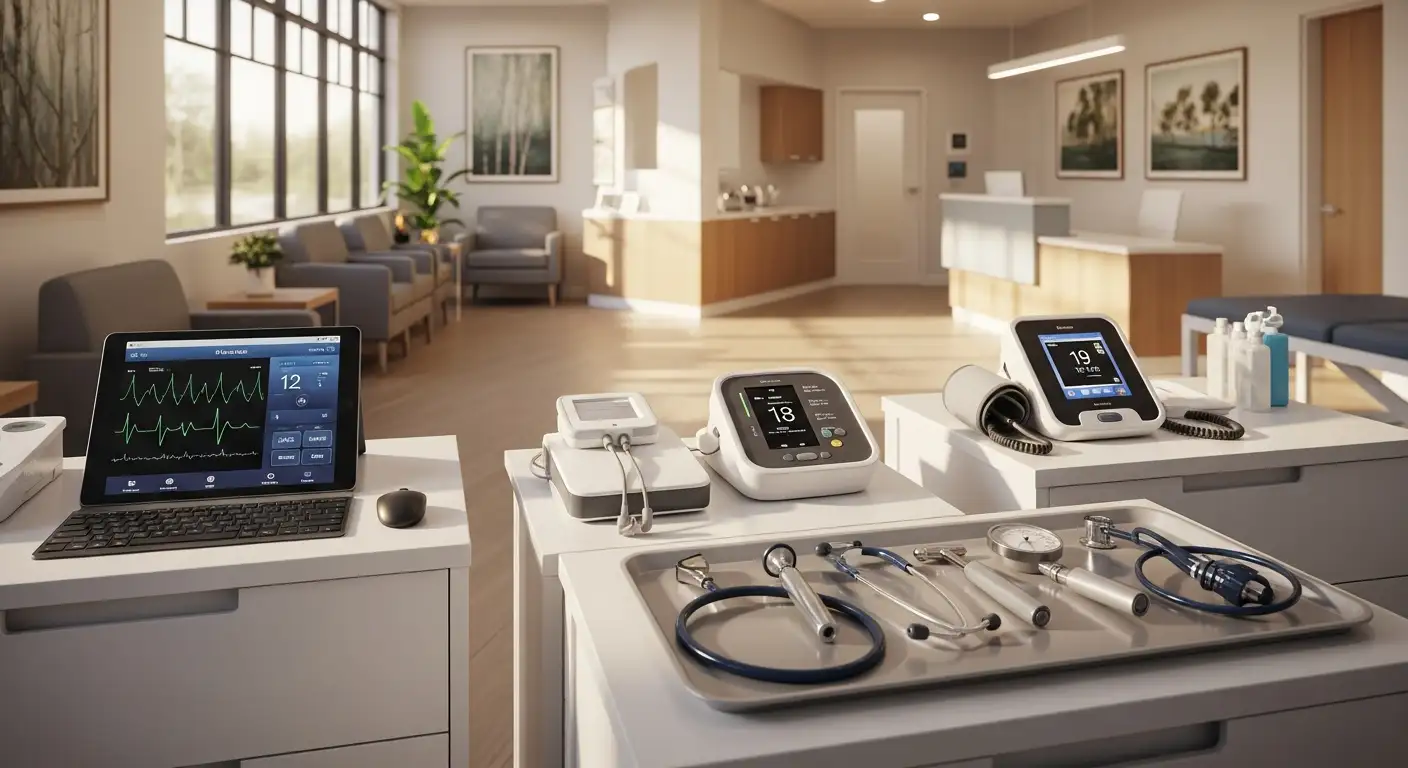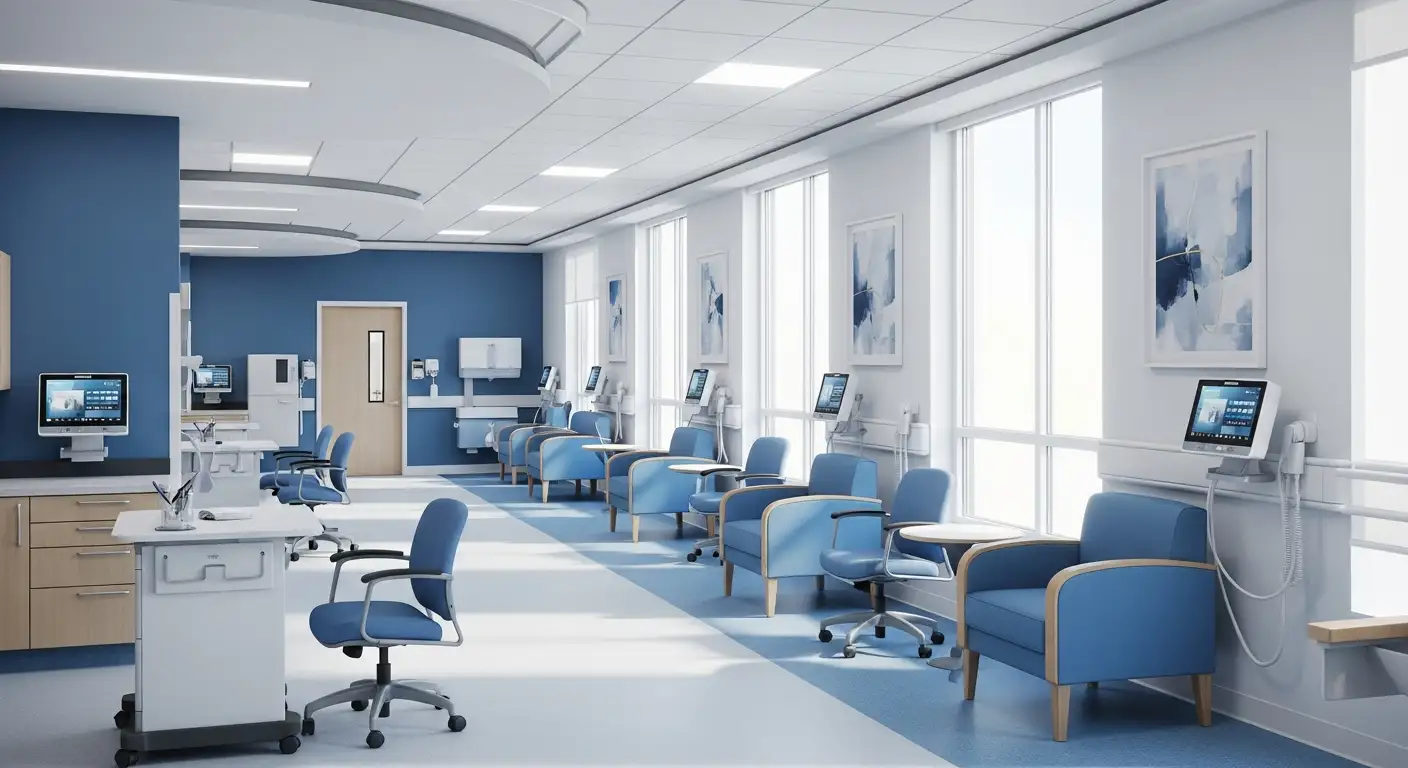How Hybrid Healthcare Builds a Sense of Security for Seniors
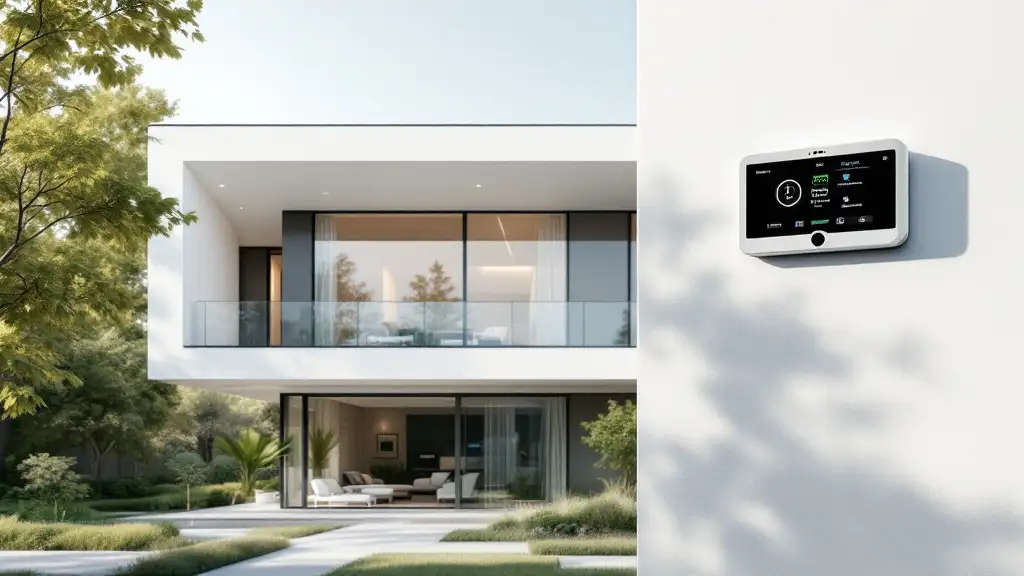
Empowering Seniors through Hybrid Healthcare Models
As the aging population grows, so does the need for innovative approaches that ensure safety, independence, and peace of mind. Hybrid healthcare, combining traditional in-person care with cutting-edge digital solutions, is transforming senior care by providing a comprehensive safety net. This article explores how technological advancements—ranging from telehealth to smart home devices—are building a secure environment for older adults, fostering confidence, and promoting a higher quality of life.
The Evolution and Components of Hybrid Healthcare

What is hybrid healthcare?
Hybrid healthcare is an innovative patient care approach that combines traditional in-person visits with digital health solutions. It aims to make healthcare more accessible, continuous, and personalized by integrating technology into routine medical services.
Digital tools and solutions involved
Several digital solutions are central to hybrid healthcare. These include telehealth, which offers virtual consultations with healthcare providers. Remote therapeutic monitoring tracks vital health metrics like blood pressure or glucose levels to support ongoing care.
Additional tools comprise home exercise programs, guided digital exercises designed for rehabilitation and fitness, and online education resources to empower patients with knowledge about their health. Mobile apps facilitate scheduling, communication, and appointment management. Virtual triage allows patients to report symptoms online, enabling faster response times.
Innovative technologies such as motion capture assist in physical therapy assessments, while digital platforms support continuous engagement and care coordination.
Fields where hybrid healthcare is implemented
This model is particularly prevalent in primary care, behavioral health, and physical therapy. In these fields, personalized, consistent support is essential, and digital solutions effectively supplement in-person services.
How does hybrid healthcare benefit seniors?
Technological advances significantly boost safety and independence among seniors. Wearable health devices like fall detectors, heart rate monitors, and GPS trackers provide real-time health data, enabling proactive management and quick response during emergencies.
Smart home systems, including voice assistants and automated safety features, support older adults in daily living. Telehealth enables remote check-ups, helping manage chronic conditions and reduce hospital visits.
Assistive robots and digital reminders aid with daily tasks, medication adherence, and social engagement, crucial for mental and physical health.
Overall, these innovations foster safer, healthier aging, promoting independence and peace of mind for seniors. They also diminish barriers such as mobility issues or transportation difficulties.
Challenges and future directions
Despite its benefits, implementing hybrid healthcare faces hurdles—such as integrating new technology securely, addressing the digital divide, and balancing in-person versus remote care.
Ensuring platforms are secure and HIPAA-compliant is critical to protecting patient data. Efforts to improve broadband access and digital literacy help bridge gaps for underserved populations.
Looking ahead, emerging trends include AI-driven insights, integration of IoT devices for smarter environments, and advanced virtual reality applications to support mental health and cognitive function.
As hybrid healthcare evolves, it promises to transform elderly care by making it more accessible, safer, and tailored to individual needs.
| Aspect | Details | Additional Insights |
|---|---|---|
| Digital Tools | Telehealth, remote monitoring, mobile apps | Support chronic disease management and health tracking |
| Implementation Fields | Primary care, behavioral health, physical therapy | Focus on personalized and continuous care |
| Benefits for Seniors | Increased safety, independence, and engagement | Use of wearables, smart home tech, virtual care |
| Challenges | Security, access, care balancing | Need for training, digital inclusion, secure platforms |
| Future Technologies | AI, IoT, AR/VR, smart environments | Explore potential for enhanced elderly support and safety |
The Role of Digital Tools in Supporting Senior Safety
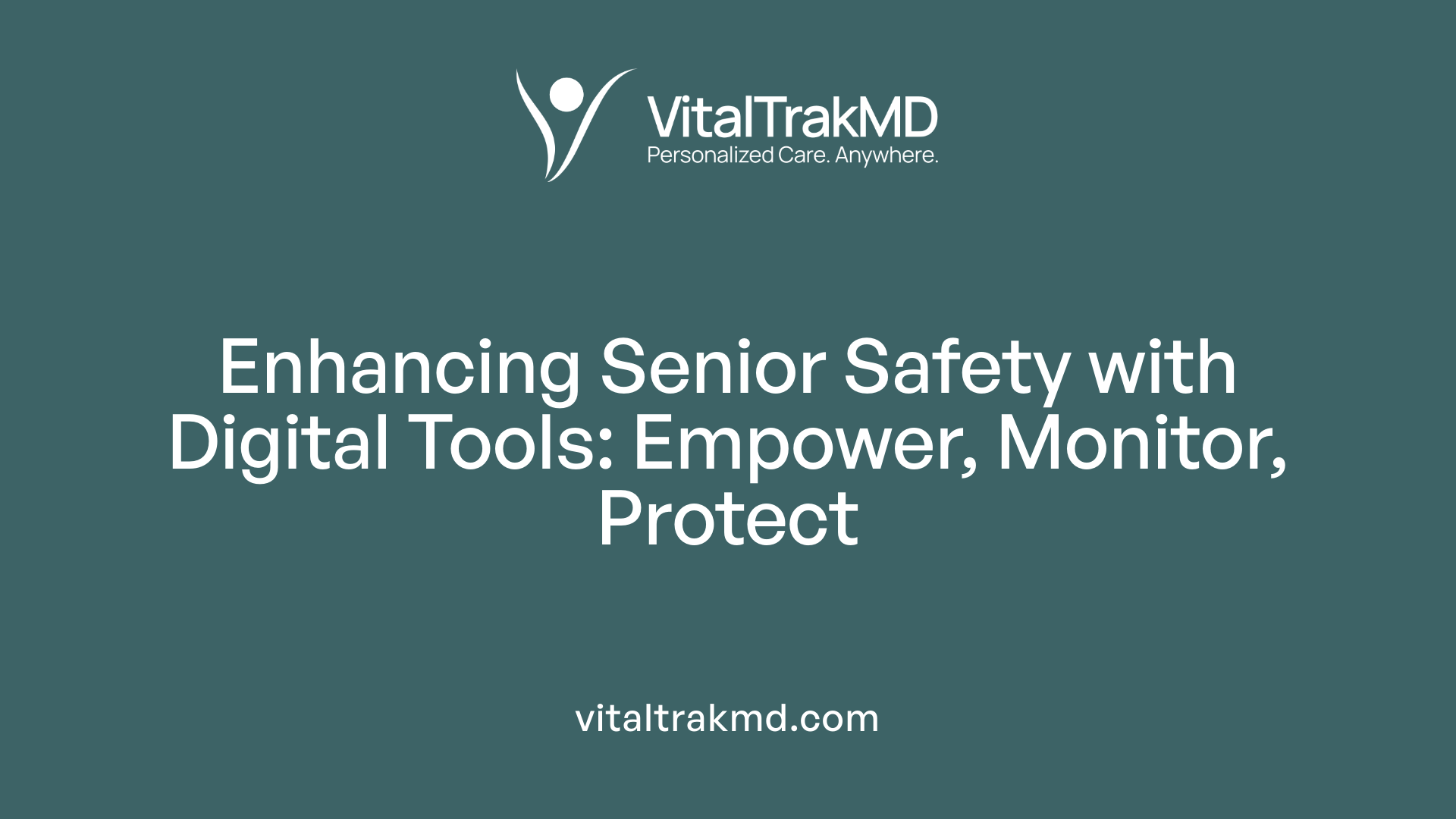
How does the integration of digital tools and health technology promote safety and reassurance among seniors?
The adoption of digital tools in senior care has revolutionized how safety and reassurance are achieved for older adults living independently or in assisted environments. These technologies facilitate continuous health monitoring, instant communication with healthcare providers, and immediate emergency responses, significantly reducing risks and enhancing confidence.
One notable example is virtual support systems like care.coach Avatar™, which provide seniors with 24/7 companionship, health tracking, medication reminders, and direct access to emergency video visits. These features help seniors feel connected and supported anytime, decreasing anxiety and the likelihood of accidents.
Wearable health devices, such as fall detection sensors, GPS trackers, and heart rate monitors, offer real-time data to caregivers and medical professionals. This immediate information enables quick intervention if issues arise, from falls or wandering to sudden health emergencies. As a result, seniors gain a sense of independence knowing that help is always accessible.
Cognitive and physical engagement are also vital for safety. Interactive apps and virtual reality programs offer mental stimulation and physical exercise, which can mitigate cognitive decline and encourage mobility.
Integrating these digital tools with home modifications, social support, and regular human interaction creates a comprehensive safety net for seniors. As technology continues to evolve, innovations like AI-powered insights and interconnected smart home devices will further bolster safety, ensuring older adults thrive in their environments with peace of mind.
| Digital Tool | Function | Impact |
|---|---|---|
| Virtual companions | 24/7 support, health management | Reduces emergency visits, provides reassurance |
| Wearable sensors | Fall detection, vital signs tracking | Immediate alerts, emergency response |
| Location tracking | Wandering prevention | Enhances independence and safety |
| Cognitive/physical apps | Mental/motor engagement | Maintains cognitive health and mobility |
| Smart home devices | Automated lighting, security | Creates safer living spaces |
Embracing these advancements not only improves safety but also fosters confidence among seniors and their families, promoting a higher quality of life through reliable, accessible healthcare technology.
Smart Home and Location-Based Technologies Enhancing Security and Independence
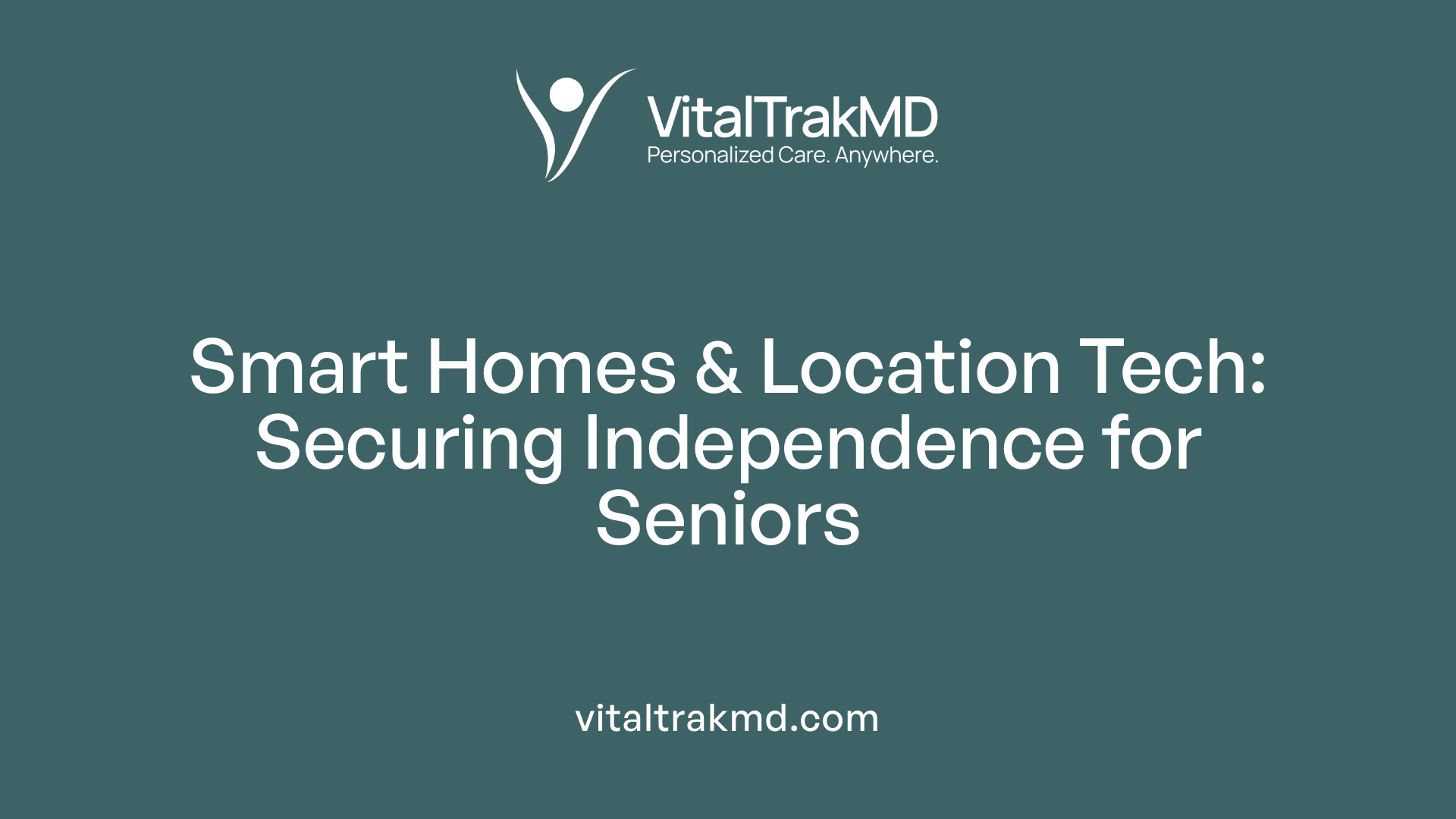
How can smart home technology improve the quality of life and security for older adults?
Smart home technologies are transforming the way older adults live independently by providing safety, convenience, and peace of mind. Devices such as smart lighting, automated locks, and digital medication dispensers make daily routines safer and easier to manage. For example, automated lighting can prevent falls by illuminating pathways at night, while secure locks and entry systems ensure safety from intruders.
Safety sensors and emergency alert systems are integral parts of smart homes. Motion sensors can detect falls or unusual activity, and security cameras enable real-time monitoring, allowing quick action when needed. These innovations help caregivers respond promptly and effectively, reducing risks and enhancing safety.
Beyond safety, smart displays, voice-activated assistants, and communication apps allow older adults to stay connected with family members, caregivers, and emergency responders. This connectivity helps reduce feelings of loneliness and promotes social engagement.
Health monitoring devices such as wearable sensors and motion trackers also support early detection of health issues, contributing to better wellness management. Overall, smart home technology creates a secure, comfortable environment where seniors can maintain independence and enjoy a higher quality of life with less reliance on direct supervision.
| Technology Type | Functions | Benefits |
|---|---|---|
| Smart lighting | Automated lights in key areas | Prevents falls, saves energy |
| Locks & security | Digital locks, cameras | Ensures home security |
| Medication management | Digital dispensers, reminders | Supports health routines |
| Motion sensors | Detect activity, falls | Enables quick emergency response |
| Communication devices | Video calls, voice assistants | Maintains social connections |
What role does location-based data technology play in senior care?
Location-based data solutions, including GPS trackers and real-time resident monitoring, enhance safety for older adults, especially those with dementia or other cognitive impairments. These systems enable caregivers to respond quickly to emergencies such as wandering, falls, or health crises.
Real-time location tracking can help prevent residents from leaving secure facilities or homes without authorization. When a senior moves beyond designated safe zones, alerts are sent to caregivers for immediate action.
Additionally, location data helps optimize staff allocation by providing insights into resident movements, improving responsiveness and reducing wait times in care settings.
Monitoring residents' movement patterns encourages physical activity and social interaction, which are crucial for mental and physical health. Overall, location-based technology offers a proactive approach to elder safety, fostering independence while minimizing risks.
| Technology | Use Cases | Benefits |
|---|---|---|
| GPS trackers | Personal devices for outdoor safety | Prevents wandering, ensures quick rescue |
| Resident location systems | Tracking in care facilities | Improves emergency response |
| Movement pattern analytics | Monitoring activity levels | Promotes independence, reduces isolation |
| Staff scheduling tools | Based on resident locations | Efficient staffing, timely care |
What safety features (alarms, sensors, alerts) support elderly security?
Safety features such as medical alert alarms, smoke and fire sensors, and motion detectors play pivotal roles in protecting older adults at home. These devices detect emergencies early and notify caregivers or emergency services instantly.
Medical alert systems, often worn as pendants or wristbands, enable seniors to call for help with a simple press of a button. Sensors that monitor smoke, carbon monoxide, and environmental hazards ensure safety from fire and toxic gas leaks.
Smart sensors monitor motion and detect falls, alerting caregivers immediately to prevent further injury. Alerts can be sent via phone calls, text messages, or integrated home systems.
Integrating these safety features into a smart home ecosystem creates a comprehensive safety net, allowing seniors to live with confidence and reducing caregiver stress.
| Safety Feature | Function | Alert System |
|---|---|---|
| Medical alerts | Emergency help at press of button | Calls caregiver or emergency services |
| Smoke & gas sensors | Detect fire, carbon monoxide | Automated alarms, notifications |
| Fall detection | Identify falls automatically | Instant alerts to caregivers |
| Motion sensors | Monitor activity, detect anomalies | Notifies of unusual patterns |
Final overview
| Technology Type | Benefits | Integration Examples |
|---|---|---|
| Smart home devices | Enhance safety, independence | Automated lighting, locks, sensors |
| Location-based data | Improve emergency response, promote activity | GPS trackers, resident movement tracking |
| Safety alarms & sensors | Early detection, quick response | Medical alert pendants, fire sensors |
Embracing these advances allows seniors to enjoy greater safety, independence, and peace of mind, helping them live securely in their own homes longer.
Enhancing Well-Being and Confidence through AgeTech Solutions

How do AgeTech solutions support senior security and confidence?
AgeTech, or senior-focused technology, plays a vital role in boosting the security and confidence of older adults. These solutions encompass a range of digital tools designed to foster independence and peace of mind.
One of the primary ways AgeTech supports seniors is through safety devices integrated into smart home systems. Voice-activated assistants, automated lighting, and smart locks help seniors manage their environments easily and securely. Wearable health monitors, such as fall detectors and GPS trackers, provide real-time health data and alert caregivers immediately in case of emergencies.
Remote monitoring systems enable caregivers and families to oversee health and safety without being physically present. This ongoing oversight helps detect issues early, reducing the risk of accidents and health crises.
Beyond safety, digital platforms facilitate social interaction, which combats loneliness and enhances social confidence. Video calls, social media, and online community activities allow seniors to stay connected with loved ones, participate in virtual events, and engage in meaningful conversations.
Privacy and security are central to AgeTech innovations. Technologies are designed to protect personal data, and family members or caregivers are often involved to ensure that older adults feel respected and their dignity preserved.
Overall, these interconnected technological solutions create a comprehensive support system. They enable older adults to live independently while feeling safe, connected, and assured in their daily lives.
| Technology Type | Functionality | Benefit for Seniors |
|---|---|---|
| Smart Home Devices | Voice assistants, smart lighting, locks | Easy environment control, enhanced safety |
| Wearable Monitors | Fall detection, GPS tracking | Immediate emergency alerts, health tracking |
| Remote Monitoring | Digital health and activity tracking | Continuous oversight by caregivers |
| Digital Social Platforms | Video calls, online communities | Social engagement, reduced isolation |
Impact of Telehealth and Remote Monitoring on Seniors’ Reassurance
How does the integration of digital tools and health technology promote safety and reassurance among seniors?
The use of digital tools and health technologies in senior care significantly boosts feelings of safety and reassurance. Continuous monitoring and easy access to virtual healthcare services enable seniors to manage their health proactively while reducing dependency on in-person visits.
One notable advancement is virtual companions like care.coach Avatar™, which provide 24/7 support. These digital assistants help with health tracking, medication reminders, and even offer emergency video consultations. Their presence has been shown to lower emergency room visits and decrease the risk of falls, giving both seniors and their families confidence in ongoing safety.
Wearable devices and fall detection systems play a crucial role by monitoring vital signs, detecting falls instantly, and sending alerts if needed. GPS trackers also help prevent wandering, especially for seniors with cognitive impairments, allowing caregivers to respond quickly in emergencies.
Beyond physical safety, technology supports mental well-being through virtual reality experiences, cognitive exercises, and interactive content that help maintain mental sharpness and prevent isolation. These tools encourage active engagement and provide mental stimulation, essential for overall reassurance.
While these technologies are powerful, combining them with personal touches—such as human caregivers and home modifications—creates a holistic approach. This integration ensures seniors feel secure and independent while enjoying the peace of mind that comes with reliable, accessible healthcare support.
How are advancements in telehealth and remote health status tracking improving seniors’ well-being?
Telehealth advancements allow seniors to consult healthcare professionals remotely, making healthcare more accessible and timely. Video calls and remote monitoring devices enable ongoing management of chronic conditions like hypertension, diabetes, and heart disease without frequent trips to clinics.
Remote health status tracking using digital devices provides real-time data on vital signs such as blood pressure, glucose levels, and oxygen saturation. Care teams can review this information continuously, adjusting treatments swiftly and reducing complications.
Such proactive health management minimizes hospital visits and emergency interventions, which is especially beneficial for seniors with mobility challenges. Technology also facilitates timely medication management through automated dispensers and reminders, further supporting health stability.
Overall, these innovations foster a sense of control and security, knowing that health is being monitored consistently, and issues can be addressed promptly from a distance.
How do virtual mental health services support elderly well-being?
Virtual mental health services have become vital in addressing common issues faced by seniors, such as depression, loneliness, anxiety, and PTSD. Online therapy sessions, peer support groups, and mental health apps provide accessible help for those hesitant or unable to attend in-person services.
These digital solutions help seniors maintain emotional stability and social engagement, essential for overall well-being. Programs tailored for the elderly include cognitive training, mood monitoring, and mindfulness exercises, often incorporated into apps accessible via smartphones or tablets.
By offering flexible, stigma-free options, virtual mental health support reduces barriers to care, helping seniors feel connected and supported from the comfort of their homes. This integration of mental health services within digital healthcare frameworks enhances the overall reassurance and quality of life for seniors.
| Technology Type | Purpose | Benefits | Additional Notes |
|---|---|---|---|
| Telehealth | Virtual consultations | Improved access, reduced travel | Enables quick specialist access |
| Remote Monitoring Devices | Track health metrics | Prevent emergency, maintain health | Continuous oversight for chronic conditions |
| Virtual Reality | Cognitive and relaxation activities | Mental stimulation, stress relief | Supports mental well-being |
| Digital Mental Health Apps | Therapy, mood tracking | Accessible, stigma-free | Enhances emotional health |
In conclusion, telehealth and remote monitoring technologies are transforming senior care by providing safer, more accessible, and reassuring healthcare experiences. These innovations not only improve health outcomes but also boost confidence, independence, and mental well-being among seniors.
The Future of Senior Safety: Emerging Trends and Technologies
How are AI and machine learning applications transforming senior safety?
AI and machine learning are increasingly integrated into senior care to analyze health data, predict risks, and personalize interventions. These technologies can identify early signs of health decline, manage chronic illnesses more effectively, and alert caregivers to potential emergencies before they happen. For example, machine learning algorithms monitor patterns in wearable health devices to detect anomalies like irregular heartbeats or falls. This proactive approach enhances safety by allowing timely medical response, reducing hospitalizations, and supporting aging in place.
What role do robotics and automation play in supporting aging seniors?
Robotics and automation are becoming vital in assisting with daily tasks and providing companionship. Robots equipped with sensors and AI capabilities can help seniors with mobility, medication reminders, and household chores. Care robots also offer social interaction, reducing feelings of loneliness and isolation. Automation streamlines routine activities, freeing up caregivers and enabling seniors to maintain independence longer.
How do integrated smart home systems contribute to safety and well-being?
Smart home systems, combining devices like voice assistants, automated lighting, and security sensors, create safer living environments. These systems can detect falls, monitor movement patterns, and control climate or lighting to prevent hazards. Real-time alerts sent to caregivers facilitate quick responses to emergencies. Moreover, these environments support aging in place by customizing settings to individual needs, increasing comfort and reducing risks.
In what ways does AR/VR technology enhance cognitive health?
Augmented and virtual reality (AR/VR) applications are used to improve cognitive function and emotional well-being among seniors. These immersive experiences can stimulate memory recall, encourage physical activity, and provide relaxation. AR/VR can also serve as engaging tools for social interaction, helping seniors stay connected with loved ones or participate in virtual activities. Such technologies offer therapeutic benefits, contributing to overall mental health and quality of life.
How do these technological advancements improve senior safety overall?
Technological innovations significantly enhance safety by enabling independent living while providing rapid responses during emergencies. Wearable health monitors, smart home systems, and digital communication tools facilitate early diagnosis, chronic disease management, and emergency alerts. Assistive devices like robots and automated reminders support daily activities and mental health. User-centered designs and supportive training promote adoption across diverse groups of seniors. Collectively, these advancements foster safer, healthier aging environments, empowering seniors to live confidently and securely.
Building Trust and Ensuring Privacy in Senior Digital Care
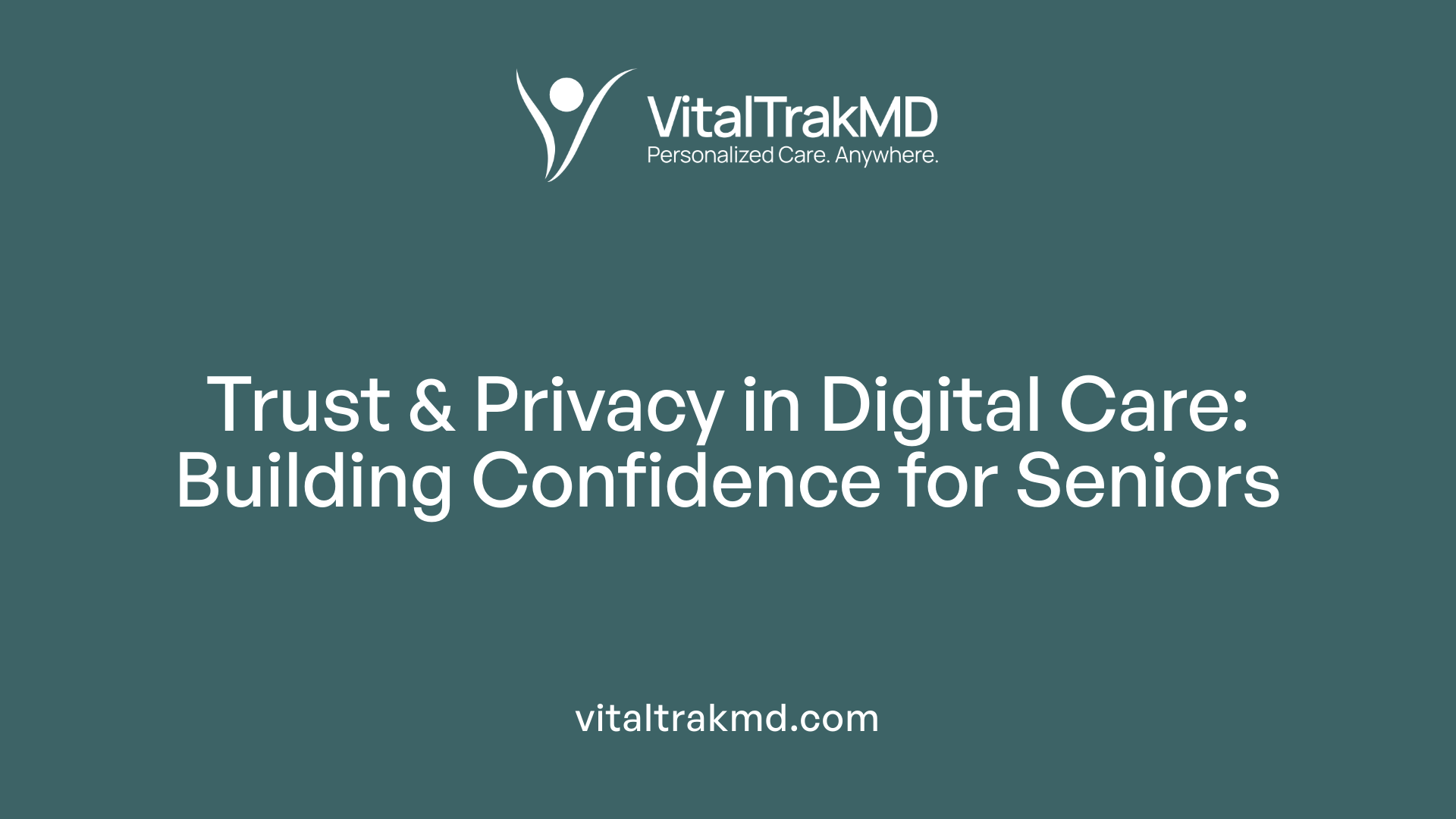
How do hybrid healthcare models contribute to building a sense of safety and security for seniors?
Hybrid healthcare approaches significantly enhance safety and security for older adults by combining traditional in-person visits with modern digital solutions. Telehealth and remote monitoring enable continuous oversight of health status, ensuring timely responses to emerging issues. Smart home technologies such as fall detection sensors, automated medication dispensers, and security systems allow real-time emergency detection, minimizing response times and preventing accidents.
By fostering a culture of safety through regular safety assessments, open communication channels, and caregiver training, these models build confidence among seniors and their families. Involving seniors actively in their care plans and providing transparent information about how their data and safety are managed further strengthen trust. Effective collaboration among healthcare providers, caregivers, and family members addresses various safety dimensions, including physical health, psychological well-being, and environmental safety.
Ultimately, hybrid healthcare creates a comprehensive safety net, supporting independent living while ensuring that emergency interventions are swift and effective. This integrated approach not only promotes peace of mind but also contributes to better health outcomes, as seniors feel more secure and supported in managing their health and daily activities.
Fostering a Secure Future for Seniors through Innovation
As technology continues to evolve, hybrid healthcare models stand at the forefront of ensuring senior safety, independence, and reassurance. By integrating digital health tools, smart home systems, and innovative AgeTech solutions, healthcare providers and families can create a protective environment that supports aging in place with dignity and confidence. The future promises further advancements—AI, robotics, and immersive technologies—that will deepen these benefits. Building on trust, privacy, and user-centric designs, the ongoing development of hybrid healthcare will make security and well-being a fundamental reality for seniors worldwide, empowering them to live full, active lives with peace of mind.
References
- What Is Hybrid Healthcare? | Tools, Benefits, and Solutions
- Smart home technology to support older people's quality ...
- Investing in AgeTech: Serving the Growing Senior ...
- The Role of Technology in Enhancing Home Health Care ...
- Technology to Enhance the Lives of Seniors: From Smart ...
- Leveraging Technology for Enhanced Resident Safety and ...
- Concept analysis of patient safety in home care: a hybrid ...
Recent articles
Want to Feel Better and Live Healthier?
Join hundreds of patients taking control of their health with personalized care that fits their life – not the other way around.
Rated 4.8/5 by 32+ customers



